Wild bergamot (
Monarda fistulosa) is one of the most resilient North American native plants and is a delight for bumble bees and butterflies. It can be used in a variety of situations, including butterfly and pollinator gardens, perennial borders and informal meadow or prairie plantings. Its bushy, upright form means no staking or pruning is required. Sit quietly in your garden and watch the constant flurry of winged friends visiting wild bergamot.
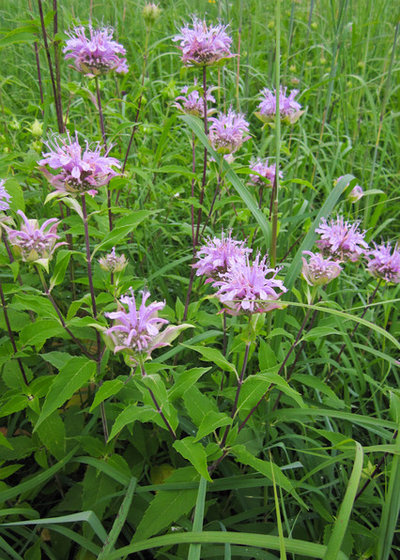
Holm Design & Consulting LLC
Botanical name: Monarda fistulosaCommon name: Wild bergamot
Origin: Native to all of North America except Alaska, Yukon and Nunavut Territories, California, Florida, New Brunswick, Nova Scotia, Prince Edward Island and Newfoundland and Labrador
Where it will grow: Hardy to -50 degrees Fahrenheit (USDA zones 2a to 8b; find your zone)
Typical plant communities: Prairies, woodland edges, meadows and savannas; naturalizes in old fields and railway right-of-ways
Soil requirement: Medium to medium-dry sand to clay-loam soil
Light requirement: Full to partial sun
Mature size: 2 to 5 feet tall and 18 to 30 inches wide
Benefits and tolerances: Moderately drought tolerant
Seasonal interest: Flowers from July until September
When to plant: Spring or fall
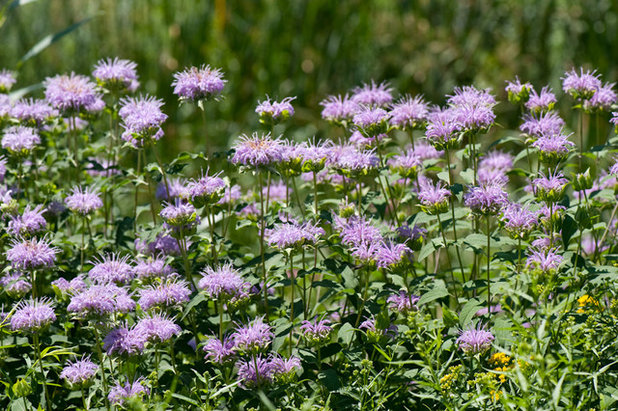
Holm Design & Consulting LLC
Distinguishing traits. Wild bergamot belongs to the mint family and has pleasantly scented foliage; the scent helps deter browsing by herbivores, including deer and rabbits.
The flowers on the straight native species (shown) range from a dusty light pink to dark pink. The flowers are long lasting; each tubular flower opens in succession on the flower head. This provides a long season of interest in the landscape as well as a continuous supply of nectar to visiting pollinators.
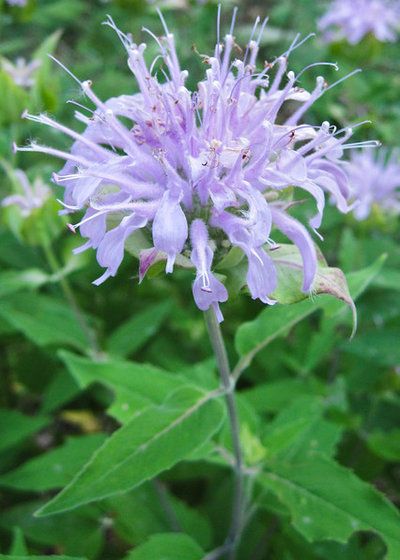
Holm Design & Consulting LLC
How to use it. Wild bergamot works well massed in traditional perennial gardens or borders as well as informal prairie plantings, naturalized areas and landscape restorations. Plants are best massed together in clusters of at least five plants to highlight the subtle pink flowers.
Combine wild bergamot with shorter prairie grasses, such as prairie dropseed, and complementary flowering plants, including black-eyed Susan (
Rudbeckia spp) and butterfly milkweed (
Asclepias tuberosa).
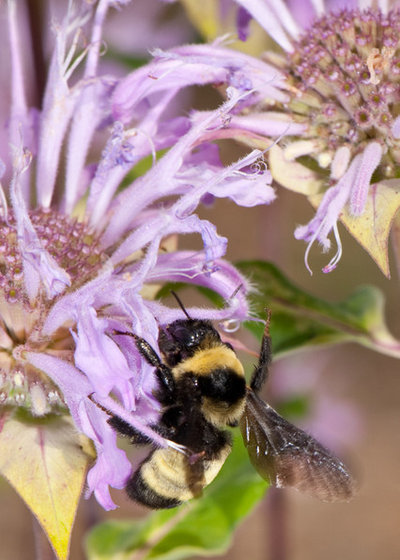
Holm Design & Consulting LLC
Planting notes. Wild bergamot thrives in most soil types, from sandy loam to heavier clay-loam soil. Site this plant in full sun. Because the foliage is susceptible to powdery mildew, plant it where the leaves will receive sufficient airflow and sunshine. Also, do not combine it with tall plants that would reduce airflow around the plant.
It grows very well from seed, especially where seed is more reasonable for large conservation projects. The roots are rhizomatous, so the plant spreads outward, doubling in size in a few years, especially in richer loam soils.
The seeds are sought by goldfinches and sparrows in late fall and winter. Leave the flower stalks standing until the following spring to provide seeds for birds. Wild bergamot will produce seedlings where open soil occurs around it. The seedling’s fibrous roots are shallow, and the plants can be pulled or transplanted if desired.
Shown: A black and gold bumblebee (
Bombus auricomis)
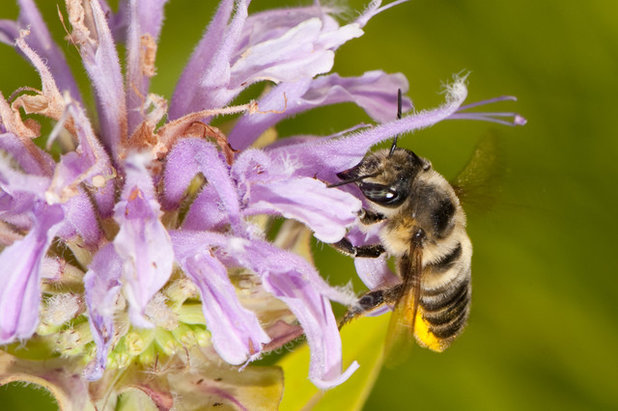
Holm Design & Consulting LLC
Pollinator notes. Wild bergamot is one of the best forage plants for bumblebees, butterflies and moths. The long, tubular flowers restrict access to nectar to these pollinators with the longest tongues. The flowers open continuously throughout the day and provide an ongoing nectar supply to these winged beauties.
Smaller bees with shorter tongues, such as the leafcutter bee (
Megachile sp), seen here, are common visitors, exploring ways to feed on nectar they typically can’t reach. Several shorter-tongued insects, especially mason wasps, will steal nectar by chewing a hole near the base of the flower by the nectary. These holes become opportunistic openings for many other insect pollinators, including small bees, beetles and flies, that will also steal nectar.
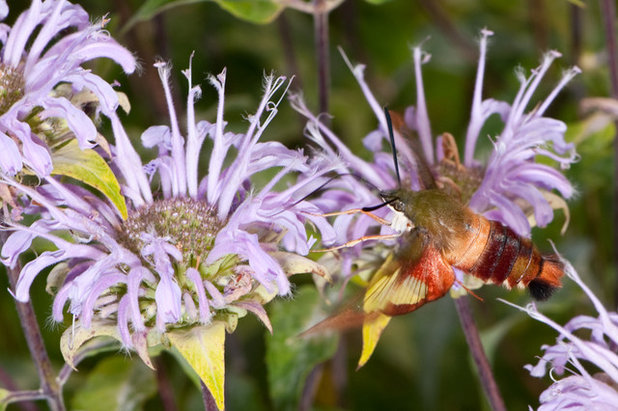
Holm Design & Consulting LLC
Day-flying hummingbird moths (seen here) hover above the flowers as they feed on the nectar. Regular nectar feeders, these moths often develop a daily feeding routine, or trapline, when wild bergamot is in flower.
More: Browse plants native to more regions of the U.S.





